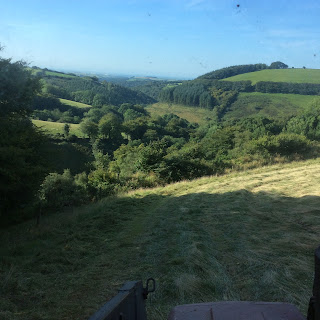We had a lovely horse come to us last autumn with a diagonal lameness - right front, left hind. She had been in shoes most of her life and had been working well in them up till that point.
She improved very quickly and was back in work within a few weeks and hunted regularly through the second half of last season, thriving on her work. So far, so good.
In the summer she left us and went to a new home.
Its often tricky when horses leave here in the summer because owners often under-estimate the impact that grass can have on hooves. In the winter that doesn't matter so much because grass sugars are generally lower (frosty grass is the exception) so horses cope better - plus of course many horses are out less in the winter anyway.
Come the spring, lots of grass, extended periods of turnout and suddenly a previously competent horse can go footy - and it can happen in a matter of hours. If nothing else has changed and your horse has been fine over winter its pretty clear what the cause is but if you move a horse to a different yard, or bring a horse home from somewhere like here, in May or June and he comes in footy after a night of turnout it can be hard to believe that the grass is the problem.
So it was with this horse. While she was on a properly balanced diet and turned out on low sugar grass (overnight in spring and summer) she was fantastically competent on all terrain but within 36 hours of moving to her new home she became footy on stones, as can happen all too easily.
Unfortunately the "good" diet she was being fed in the new home just wasn't good enough. It was low in key minerals, including copper and zinc, both of which directly affect hoof health and the sugar levels were higher.
Although she was kept off grass during the day in summer, which undoubtedly helped, once it got to autumn (and "wet weather") they started to turn her out during the day and stable her at night despite a tremendous flush of grass. This led to a lameness double-whammy, with high sugar grass increasing her footiness and long periods of inactivity making her stiff.
The really sad thing is that all these issues could have been resolved very easily by tweaking her diet and management and then her feet would have been 100% healthy in a very short time.
But of course if you believe that footiness is the result of a horse being unshod rather than of poor diet then there is another solution, one which does not involve improving the horse's overall health but allows you to use them as if you had - yes, of course, a set of shoes was the obvious answer(!).
Now if you really have no better way - if your management options are limited or you have a horse with additional problems, perhaps a metabolic illness - then shoes may be a sensible solution. However if you simply want short cuts and aren't interested in proper nutrition and biomechanics I would suggest an engine is a more ethical option than a horse.














3 comments:
Agree 100 %
I am sitting on a hill near Manchester and I can clearly see a plume of steam rising from somewhere near to Bridgewater :)
Totally justified.
C
Hi,
I'm interested in what easy tweaks could have been made to the management in this situation, given the catch 22 of needing to keep the horse moving but also keep it off the lush grass?
Post a Comment